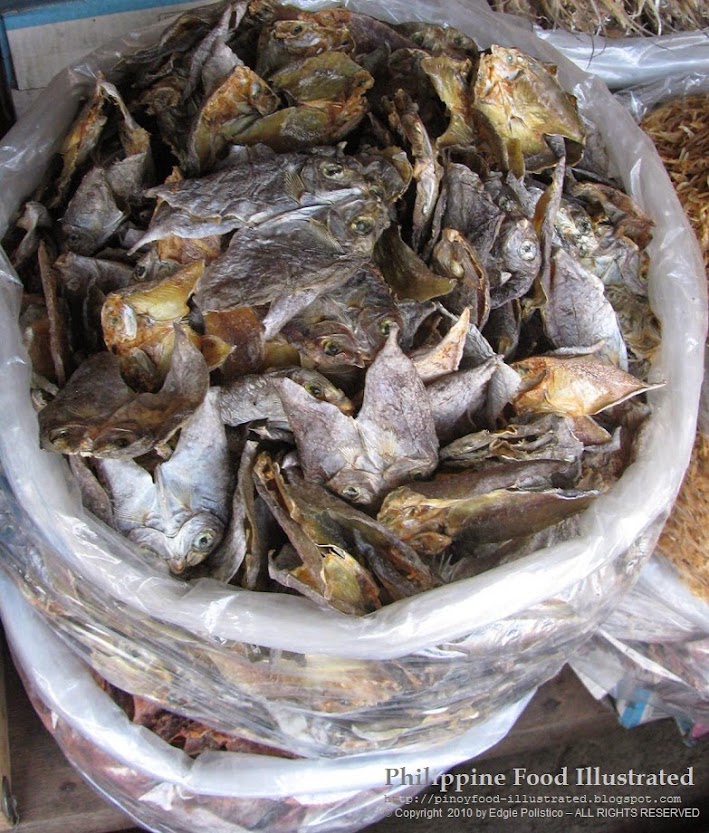Abo fish (tiger toothed croaker) is a kind of fish found in the seas of Camarines Sur in Bicol.
Biti is rare and pricey when available.
As of 2009, a kilo of biti is worth around P1,200.00 in Naga City. In 2015, it is sold at P2,500.00 a kilo in Naga City and up to P3,000.00 or more in other places outside the city.
This dried internal organ of abo fish can hardly be found being processed, dried, and sold outside Camarines Sur in Bicol or anywhere else in the country.
It is cooked by pan-frying on low to medium fire. It would swell and turns crisp like chicharon when cooked. Must be taken away from the pan when already golden brown. Otherwise, it will turn dark and darker, which means biti is getting burned and bitter to taste.
| Pan frying has to be done quickly on medium fire. Biti would easily get scorched and burned. It must be golden brown when cooked, not dark brown. |
It can be served as a breakfast meal with sinangag na kanin (pan-fried rice) and sunny-side-up chicken egg or served as a snack or pulutan (food served along with alcoholic drinks).
| A handful of biti I found in the public market of Legazpi City in 2015. |
| A sheet of dried biti found in the People's Mall (a public market) of Naga City in 2015. |
| 10 grams of biti is priced at PHP250 in 2015 when I found it in the People's Mall ( a public market) of Naga City in 2015. |
| A handful of biti from the public market of Naga City |
| A pack and a handful of biti. I found this in the public market of Naga City during one of my travels in Camarines Sur (Bicol) in 2009 |
All photos by Edgie Polistico in this blog are copyrighted. ALL RIGHTS RESERVED.
If you liked this post and our site, share it.
Let us know your opinion on the subject. Feel free to comment in the comment section, below. We need to know what you think.
Tell us what other topics you would like us to write, share, and discuss about.
For more about Filipino food, see this Philippine Food, Cooking, and Dining Dictionary. It is OPEN and FREE.
Continue to follow my blogs. You can also follow and learn more by joining us in our Facebook group. Have more bits and pieces about our kind of food, ingredients, and ways of cooking, dining, and knowing food culture across the 7,641 islands of the Philippines. I will search for more and continue to share my findings. It is my pleasure to rediscover the known and least known things or the unheard ones and put them here for everyone to find, learn, and treasure.
Encouragement and enthusiasm are not enough. I also need moral support, prayers, and anything else that can uplift my spirit and keep my good reasons. Keep them coming. Sharing and giving away is happiness to me. If you are pleased and happy with what I am doing, just smile and share the happiness we have in the PHILIPPINE FOOD ILLUSTRATED. I feel energized every time my blog becomes one of the reasons why you are happy and smiling.
Edgie Polistico

%2B-%2BDamortis%2C%2BSanto%2BTomas%2C%2BPangasinan%2B(3).jpg)

.jpg)
.jpg)




